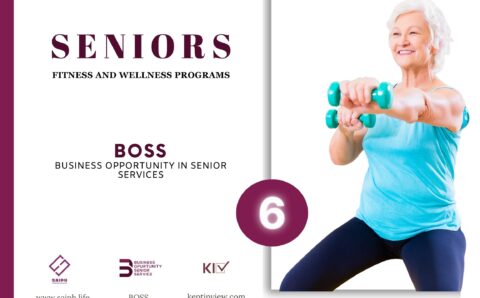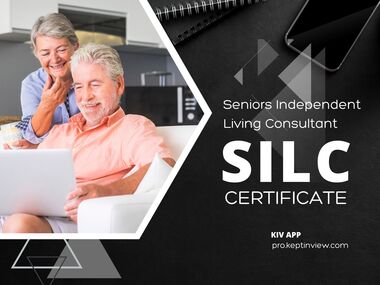Home Modifications Course
Home Modifications Course
SAIPH offers a Seniors Independent Living Consultant certificate to start the best business ideas from home in the Senior Home Downsizing and Decluttering Market.
The SILC Certificate consists of five required courses that teach you how to start your own “home downsizing” and “senior moving” businesses using the KIV app.
- Home Downsizing Business 101
- Aging in Place program
- Effective marketing seniors
- Digital home downsizing
- Kept In View guideline.
We strongly advise you to apply for the “KIV PLUS” package. You will have access to all courses and a SILC certificate; however, with the current offer, you will pay the same SILC certificate registration fee but will also receive the following complimentary extra benefits:
Unlimited access to the KIV app as your primary working tool:
A business plan template
Marketing Strategy Guidelines
Course Overview
The focus of this course is on alterations made at home to be more suited and accessible to individuals of various physical abilities. It aids you in comprehending the project’s key needs, necessary adjustments, and project management.
If you want to start a new profession in this industry or expand your customer base to include seniors, this course is a fantastic place to start. It will be an excellent resource for seniors and their family members to learn how they may assist their loved ones. This course is for:
- Family members.
- Medical/health students.
- Remodelling Contractors.
- Home Care Providers.
- Handyman Services.
- Smart Home Tech.
- Interior Designers.
- Medical Alert Providers.
- Home Security Providers.
- HME (Home Medical Equipment).
- Senior Real Estate Specialists.
- Reverse Mortgage Agents.
- Legal Services/Elder Law.
- Senior Living Services.
What is Senior home modification:
Seniors’ home modification, often referred to as home modifications for aging in place, involves making structural and design changes to a senior’s residence to enhance safety, accessibility, and comfort as they age. These modifications are intended to allow seniors to continue living independently in their own homes and to minimize the risk of accidents or difficulties associated with aging. Here are some common examples of seniors’ home modifications:
- Grab Bars: Installing grab bars in bathrooms and other areas to provide support and stability for seniors when standing up or moving around.
- Ramps and Stairlifts: Building ramps or installing stairlifts to make multi-level homes more accessible for individuals with mobility challenges.
- Wider Doorways: Widening doorways to accommodate mobility aids like wheelchairs or walkers.
- Non-Slip Flooring: Replacing or adding non-slip flooring materials to reduce the risk of falls, especially in areas like bathrooms and kitchens.
- Handrails: Adding handrails to staircases, hallways, and other areas to provide support and prevent falls.
- Lowered Countertops: Lowering kitchen countertops or creating adjustable countertops for easier food preparation and use of kitchen appliances.
- Accessible Bathroom Features: Installing walk-in showers or walk-in bathtubs, as well as raised toilets and accessible sinks.
- Improved Lighting: Enhancing overall lighting and adding task lighting to improve visibility and reduce the risk of accidents.
- Smart Home Technology: Integrating smart home technology to control lighting, temperature, and security systems more easily, even for those with limited mobility.
- Curbless Entryways: Creating curbless entryways and thresholds to eliminate tripping hazards.
- Emergency Alerts: Installing emergency alert systems that seniors can use to call for help in case of a fall or other emergency.
- Bedroom Modifications: Adjusting the height of the bed and using adaptive equipment like bed rails to aid with getting in and out of bed.
These modifications are tailored to meet the specific needs and challenges of seniors, helping them maintain their independence and quality of life while staying in their own homes. Home modifications for seniors can vary depending on individual requirements and the physical layout of the home, and they are often carried out in consultation with healthcare professionals, occupational therapists, and contractors with expertise in accessible design.





